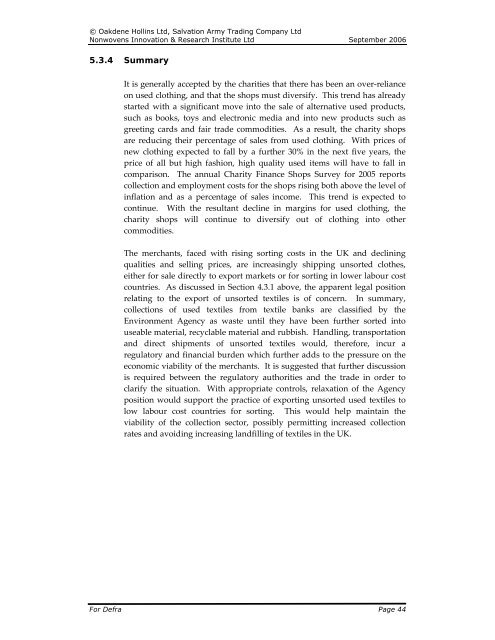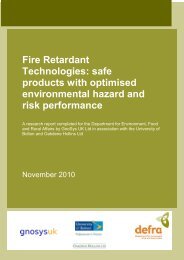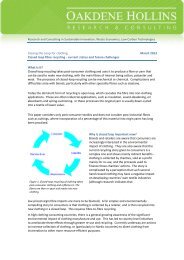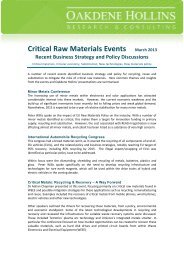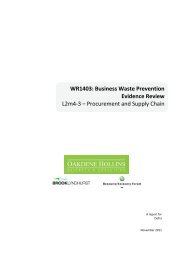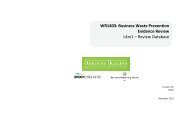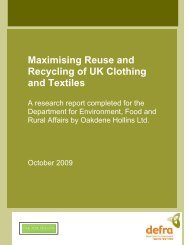Recycling of Low Grade Clothing Waste - Oakdene Hollins
Recycling of Low Grade Clothing Waste - Oakdene Hollins
Recycling of Low Grade Clothing Waste - Oakdene Hollins
Create successful ePaper yourself
Turn your PDF publications into a flip-book with our unique Google optimized e-Paper software.
© <strong>Oakdene</strong> <strong>Hollins</strong> Ltd, Salvation Army Trading Company Ltd<br />
Nonwovens Innovation & Research Institute Ltd September 2006<br />
5.3.4 Summary<br />
It is generally accepted by the charities that there has been an over‐reliance<br />
on used clothing, and that the shops must diversify. This trend has already<br />
started with a significant move into the sale <strong>of</strong> alternative used products,<br />
such as books, toys and electronic media and into new products such as<br />
greeting cards and fair trade commodities. As a result, the charity shops<br />
are reducing their percentage <strong>of</strong> sales from used clothing. With prices <strong>of</strong><br />
new clothing expected to fall by a further 30% in the next five years, the<br />
price <strong>of</strong> all but high fashion, high quality used items will have to fall in<br />
comparison. The annual Charity Finance Shops Survey for 2005 reports<br />
collection and employment costs for the shops rising both above the level <strong>of</strong><br />
inflation and as a percentage <strong>of</strong> sales income. This trend is expected to<br />
continue. With the resultant decline in margins for used clothing, the<br />
charity shops will continue to diversify out <strong>of</strong> clothing into other<br />
commodities.<br />
The merchants, faced with rising sorting costs in the UK and declining<br />
qualities and selling prices, are increasingly shipping unsorted clothes,<br />
either for sale directly to export markets or for sorting in lower labour cost<br />
countries. As discussed in Section 4.3.1 above, the apparent legal position<br />
relating to the export <strong>of</strong> unsorted textiles is <strong>of</strong> concern. In summary,<br />
collections <strong>of</strong> used textiles from textile banks are classified by the<br />
Environment Agency as waste until they have been further sorted into<br />
useable material, recyclable material and rubbish. Handling, transportation<br />
and direct shipments <strong>of</strong> unsorted textiles would, therefore, incur a<br />
regulatory and financial burden which further adds to the pressure on the<br />
economic viability <strong>of</strong> the merchants. It is suggested that further discussion<br />
is required between the regulatory authorities and the trade in order to<br />
clarify the situation. With appropriate controls, relaxation <strong>of</strong> the Agency<br />
position would support the practice <strong>of</strong> exporting unsorted used textiles to<br />
low labour cost countries for sorting. This would help maintain the<br />
viability <strong>of</strong> the collection sector, possibly permitting increased collection<br />
rates and avoiding increasing landfilling <strong>of</strong> textiles in the UK.<br />
For Defra Page 44


